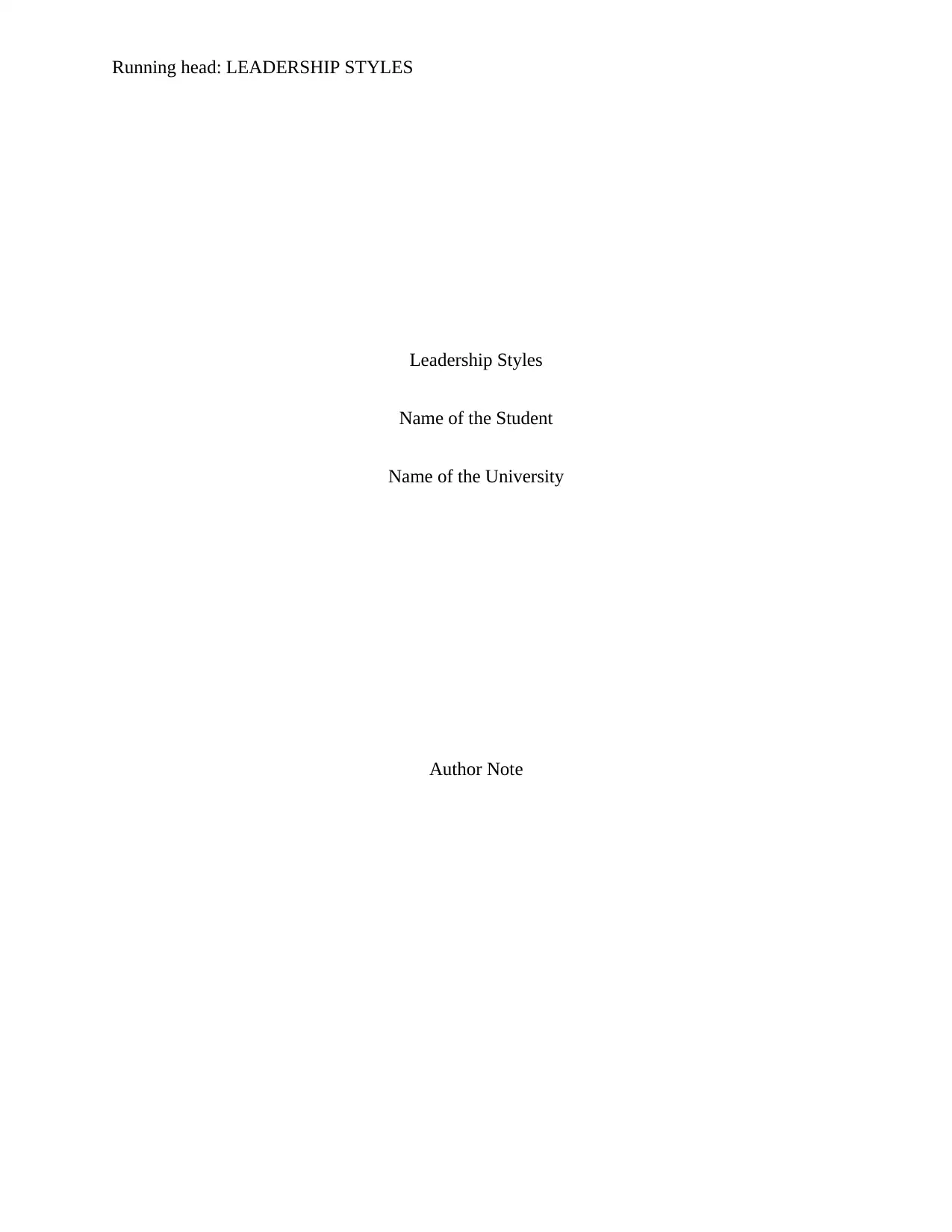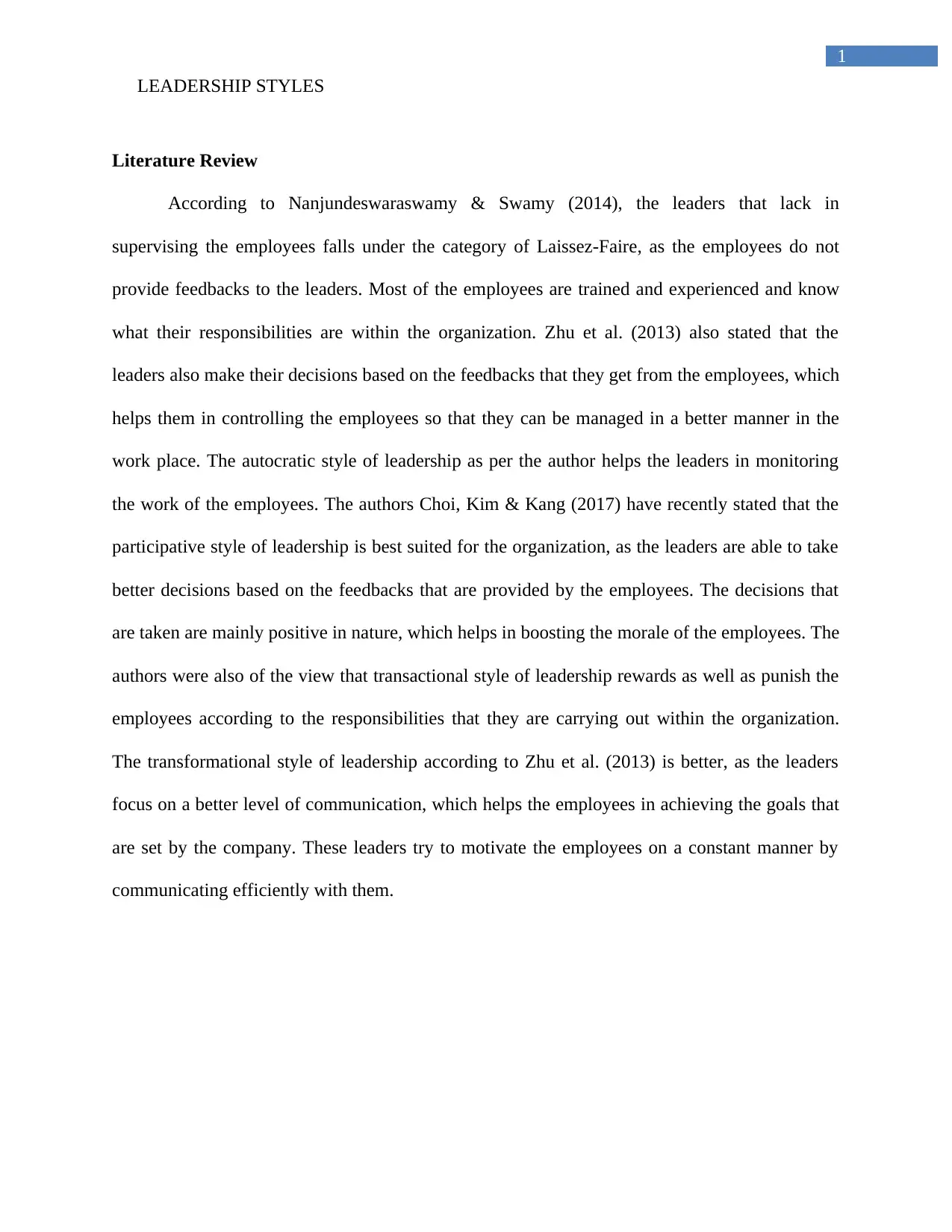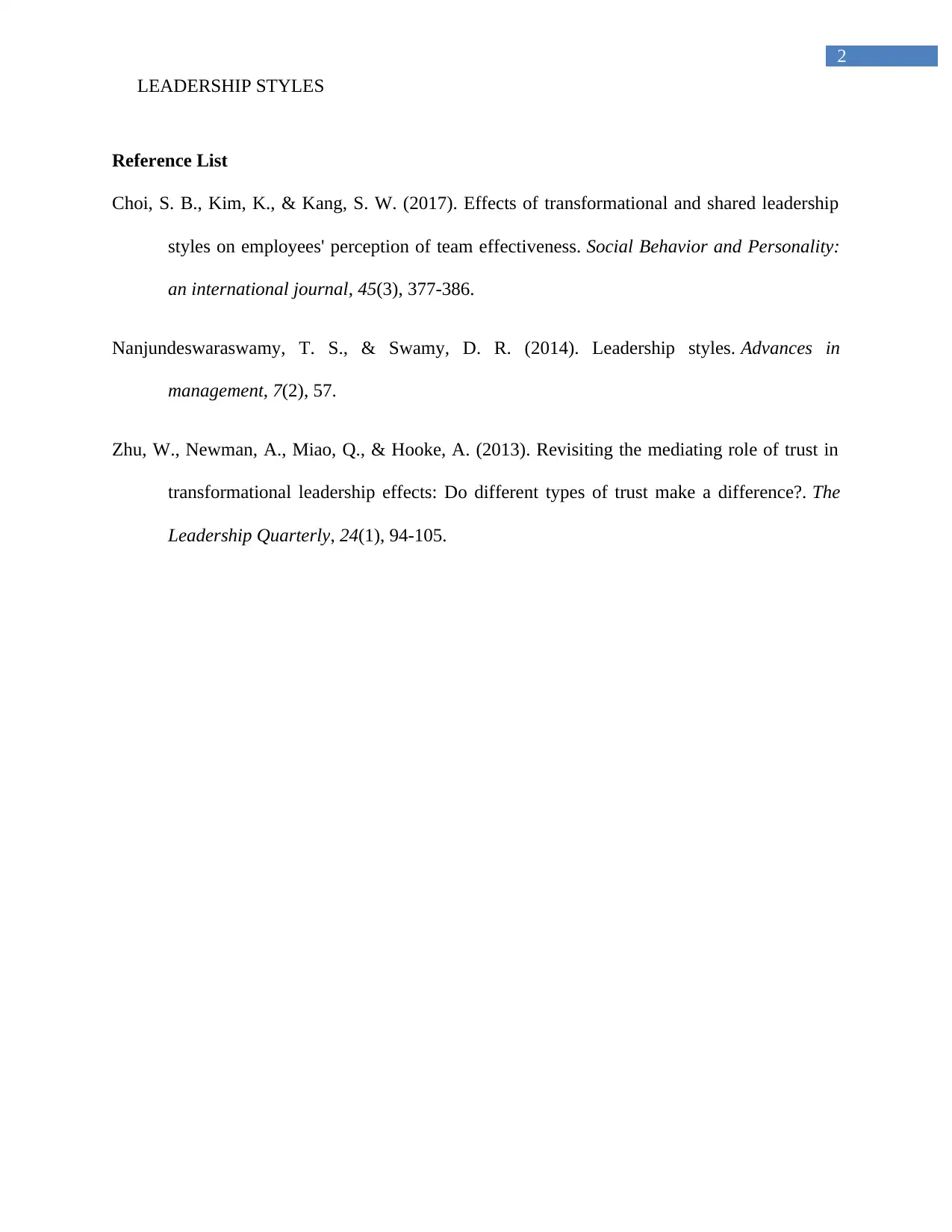Leadership Styles Report - Analysis of Different Styles
VerifiedAdded on 2020/03/02
|3
|435
|61
Report
AI Summary
This report explores various leadership styles, drawing on the work of several authors. It examines the impact of different leadership approaches, such as Laissez-Faire, autocratic, participative, and transformational, on employee behavior and organizational outcomes. The report highlights the importance of employee feedback and communication in effective leadership. It discusses how transformational leaders motivate employees and how transactional leaders use rewards and punishments. The report also references the work of Choi, Kim & Kang (2017), Nanjundeswaraswamy & Swamy (2014), and Zhu et al. (2013) to provide a comprehensive overview of the subject. This assignment provides valuable insights into the nuances of effective leadership and its impact on organizational success.
1 out of 3









![[object Object]](/_next/static/media/star-bottom.7253800d.svg)